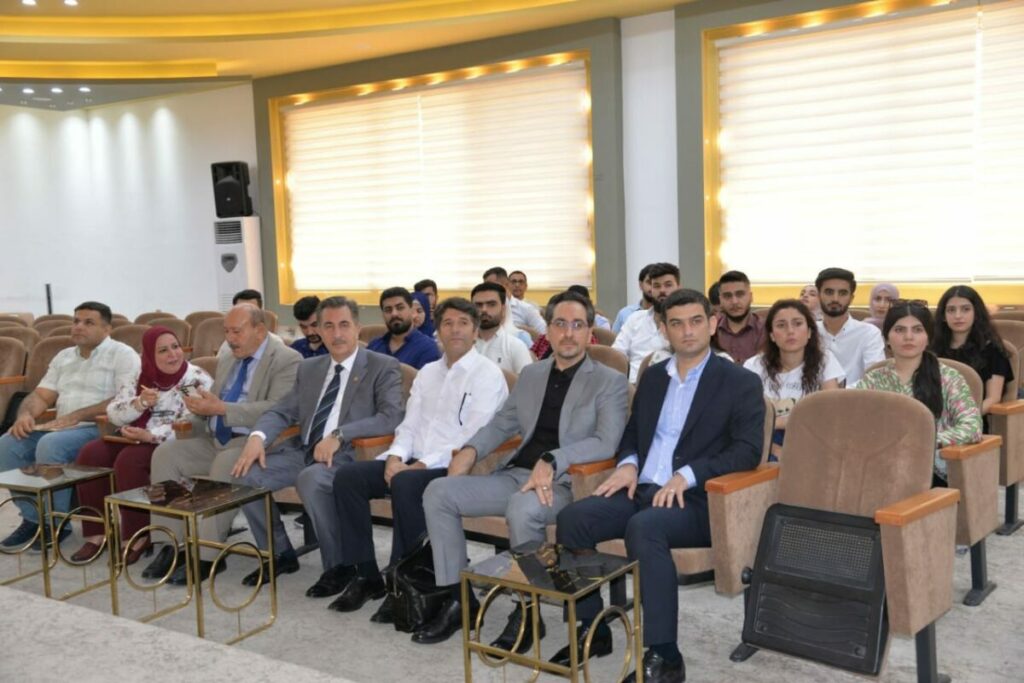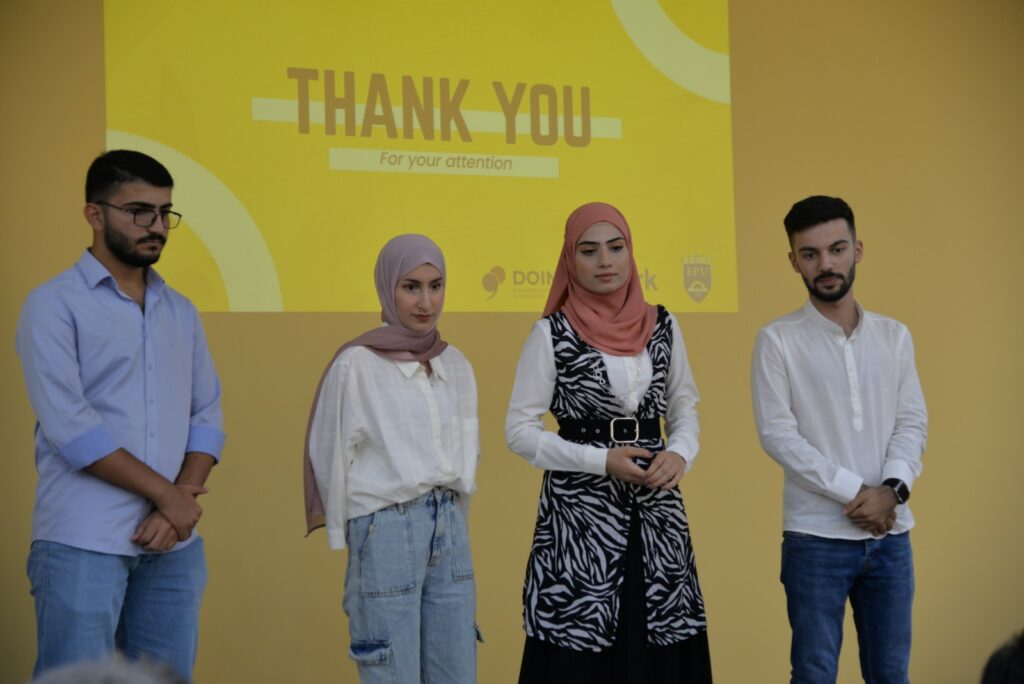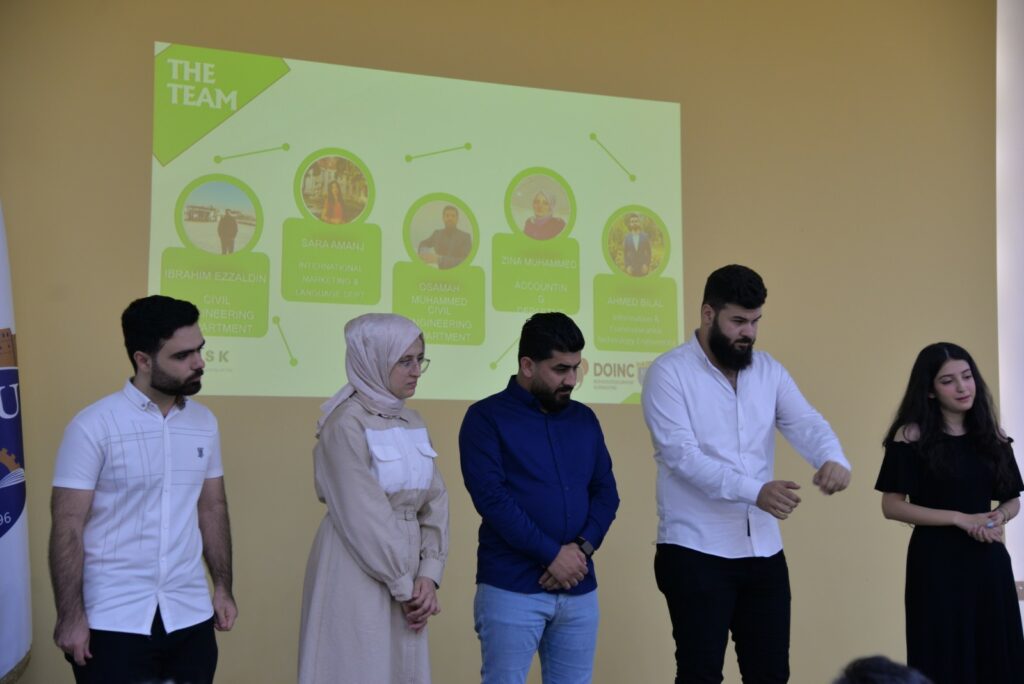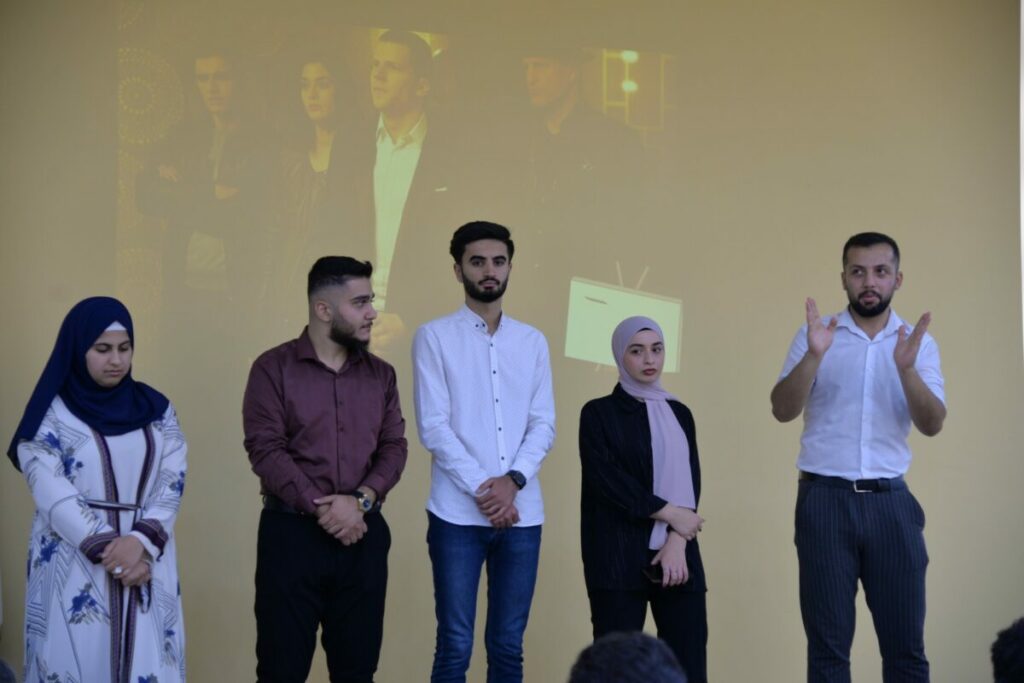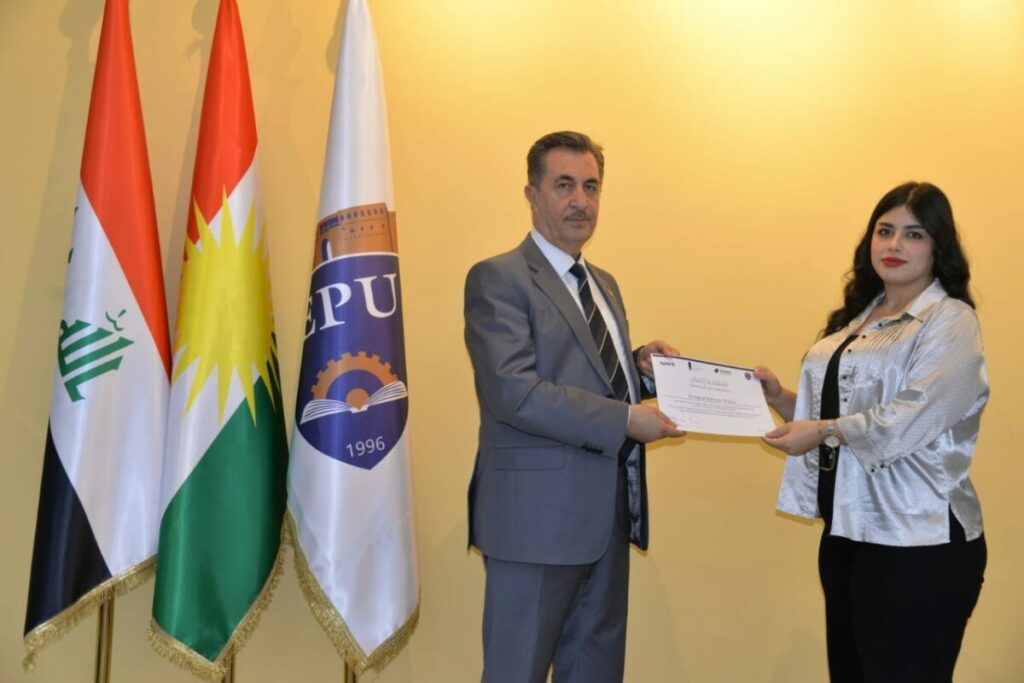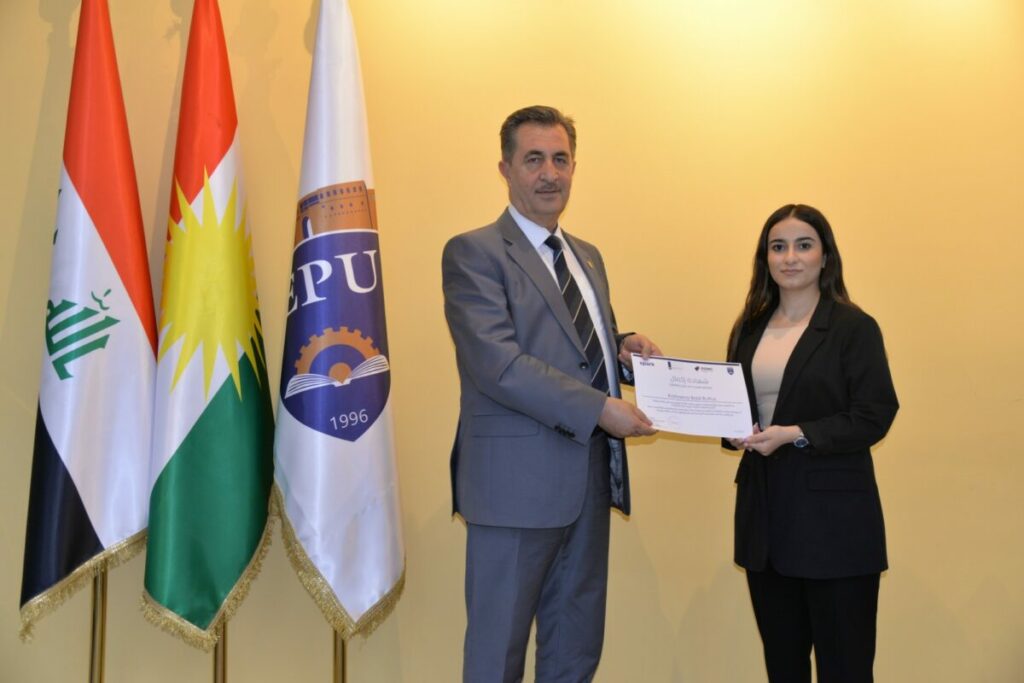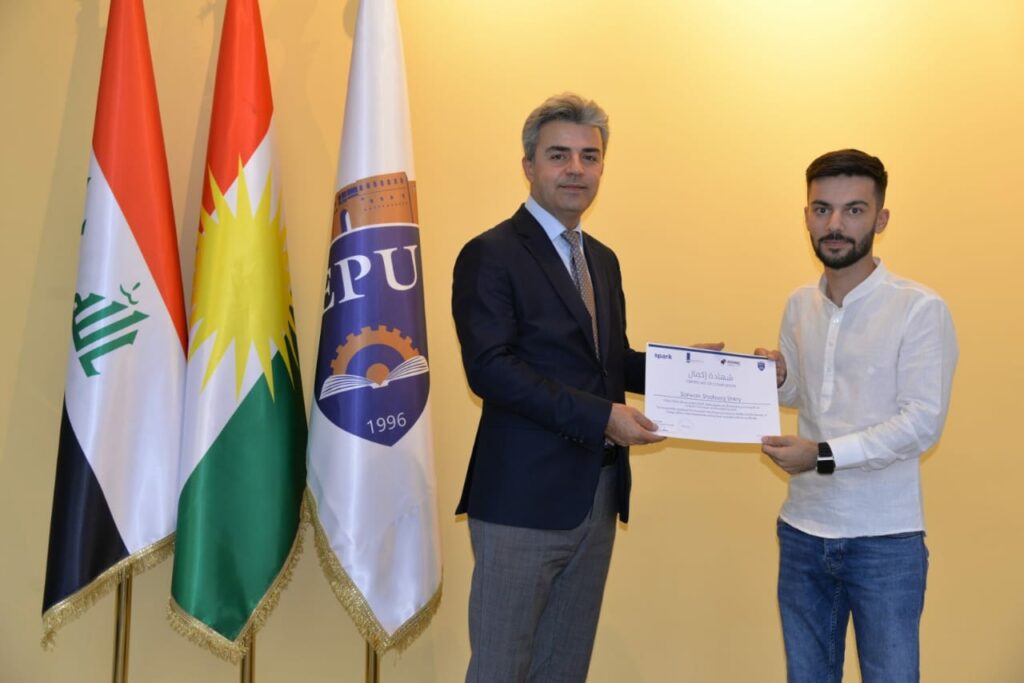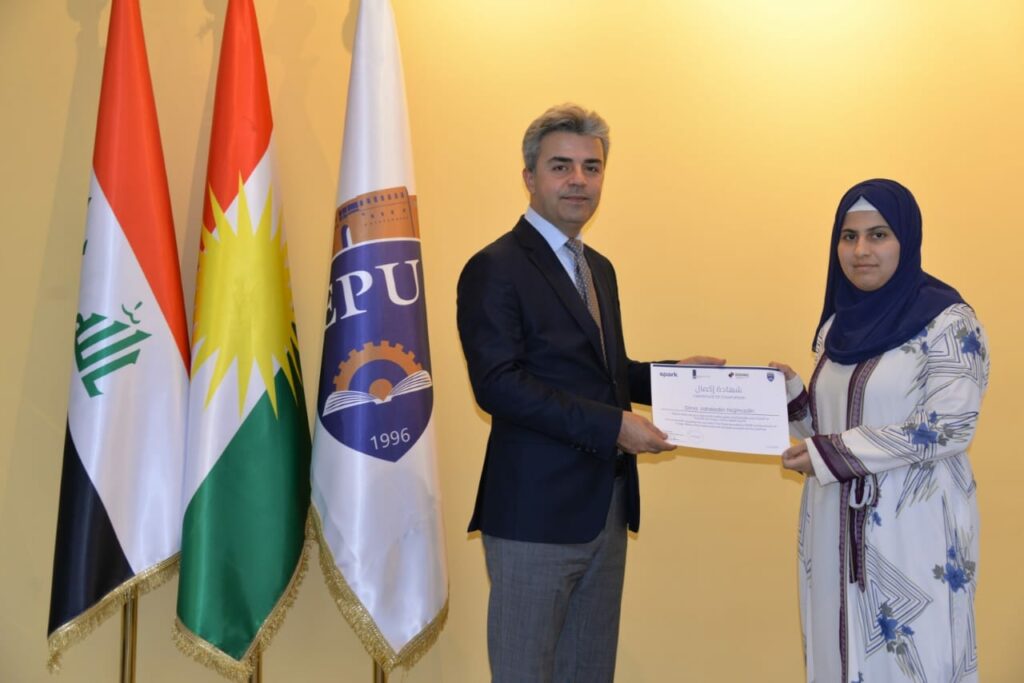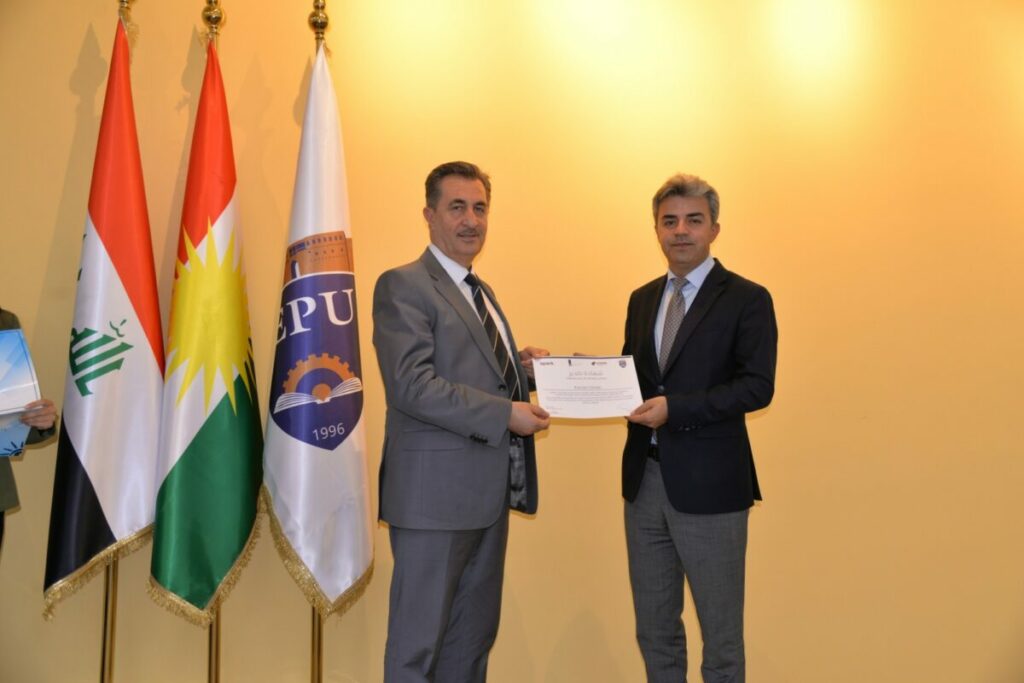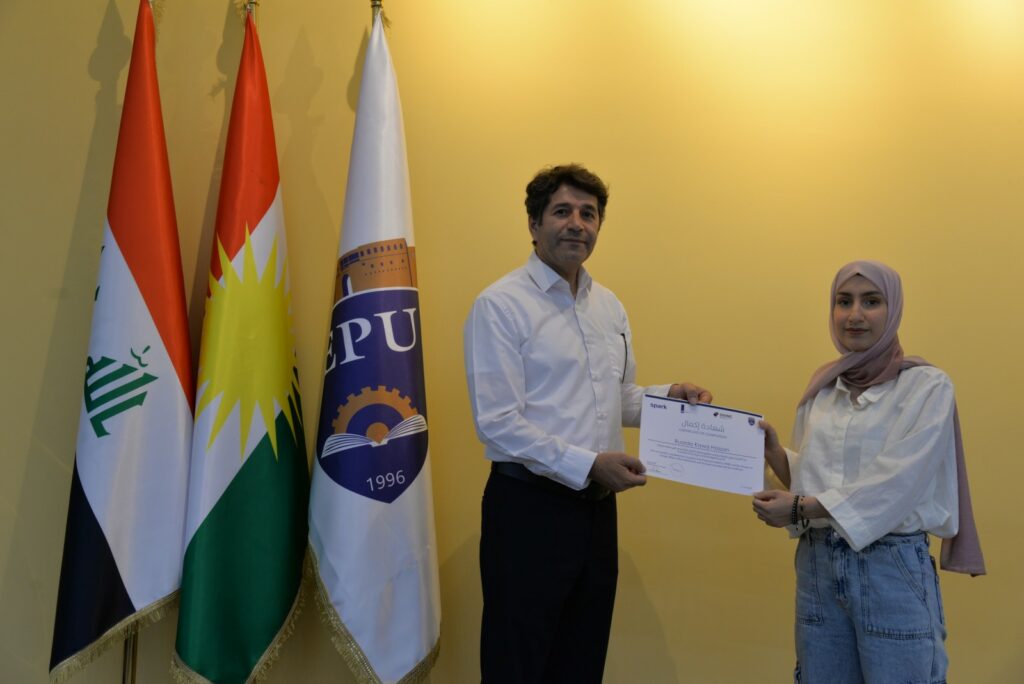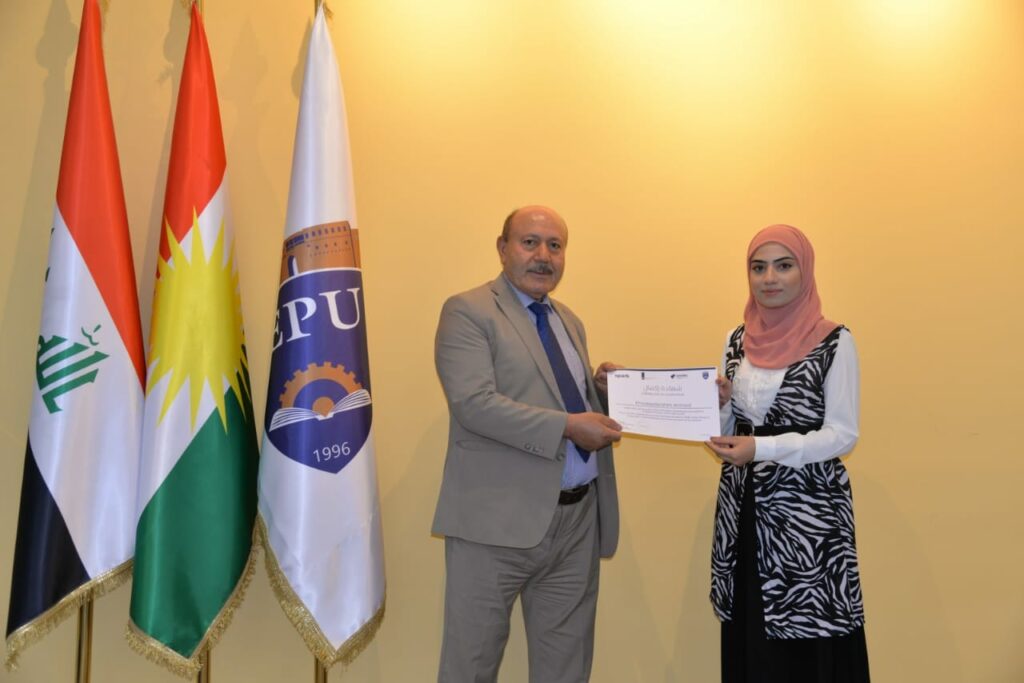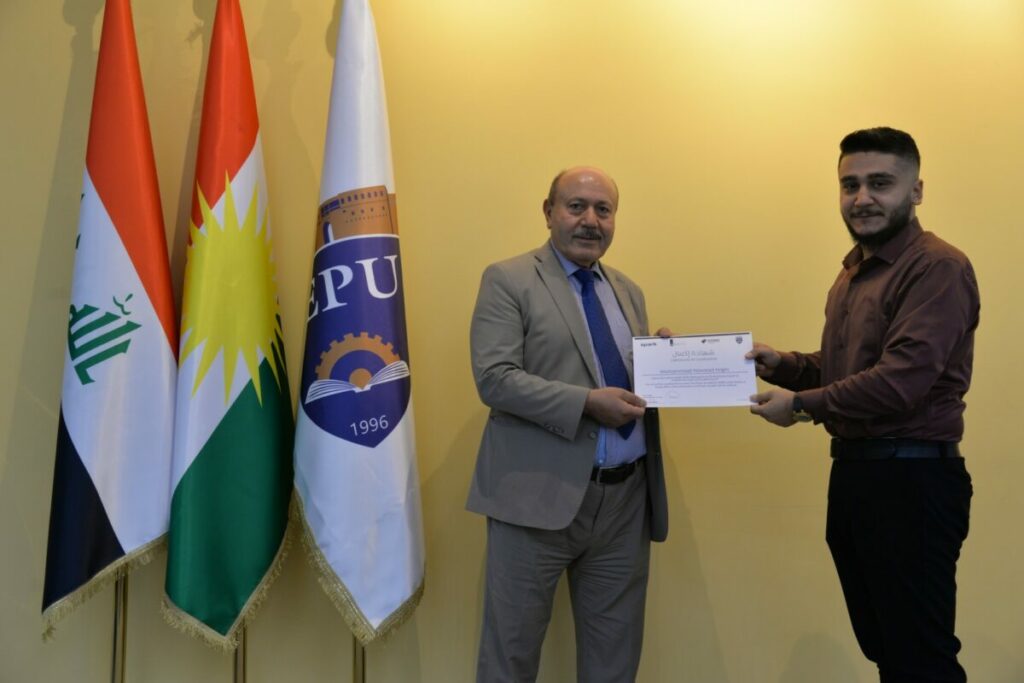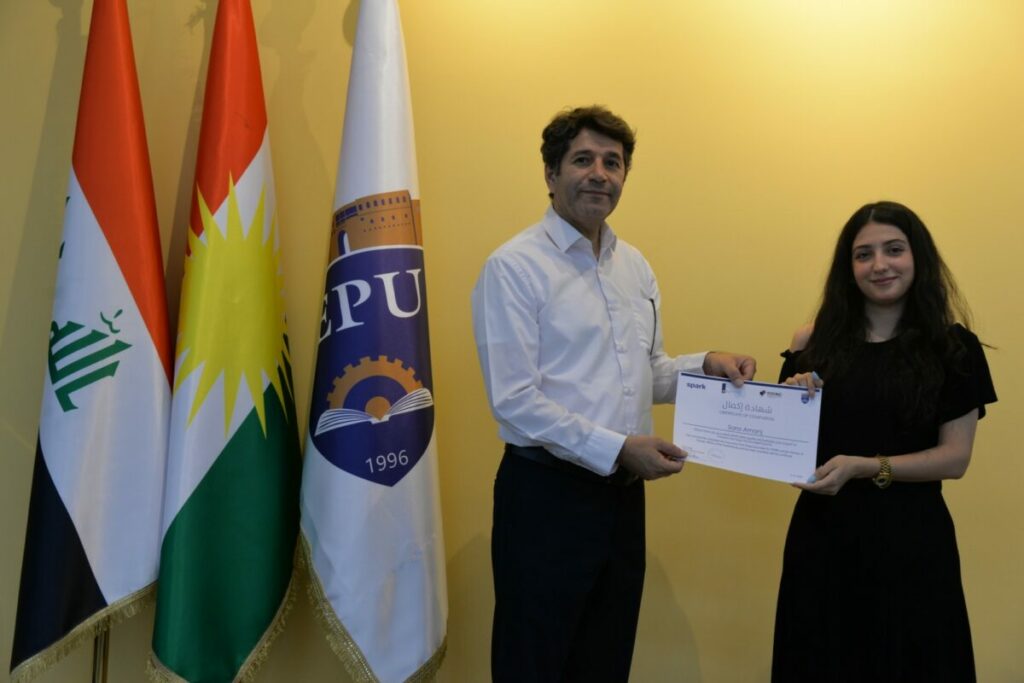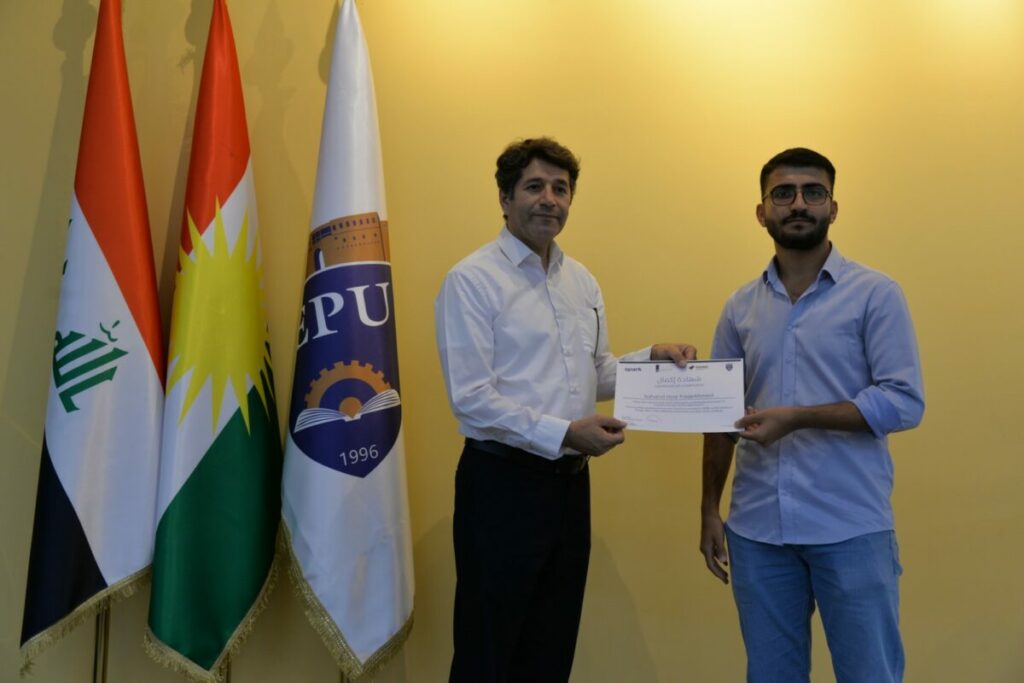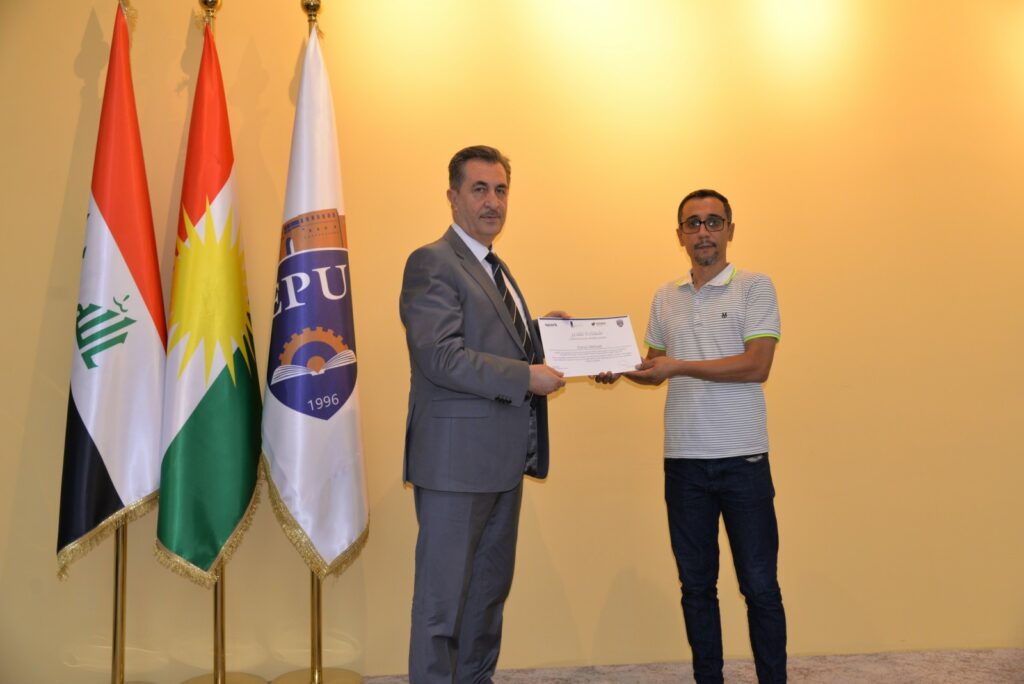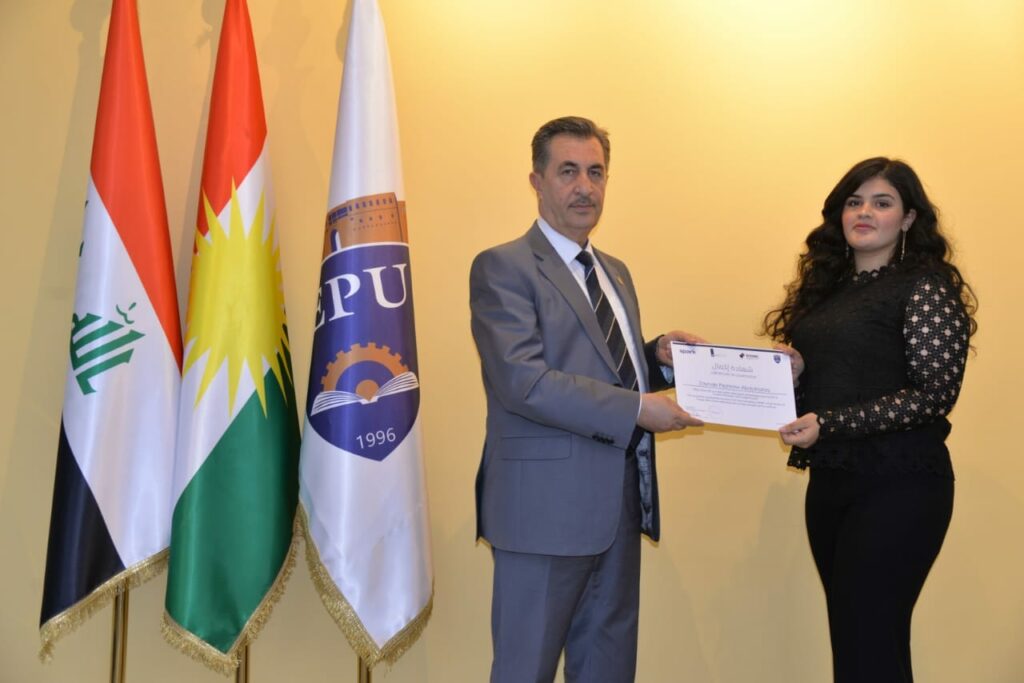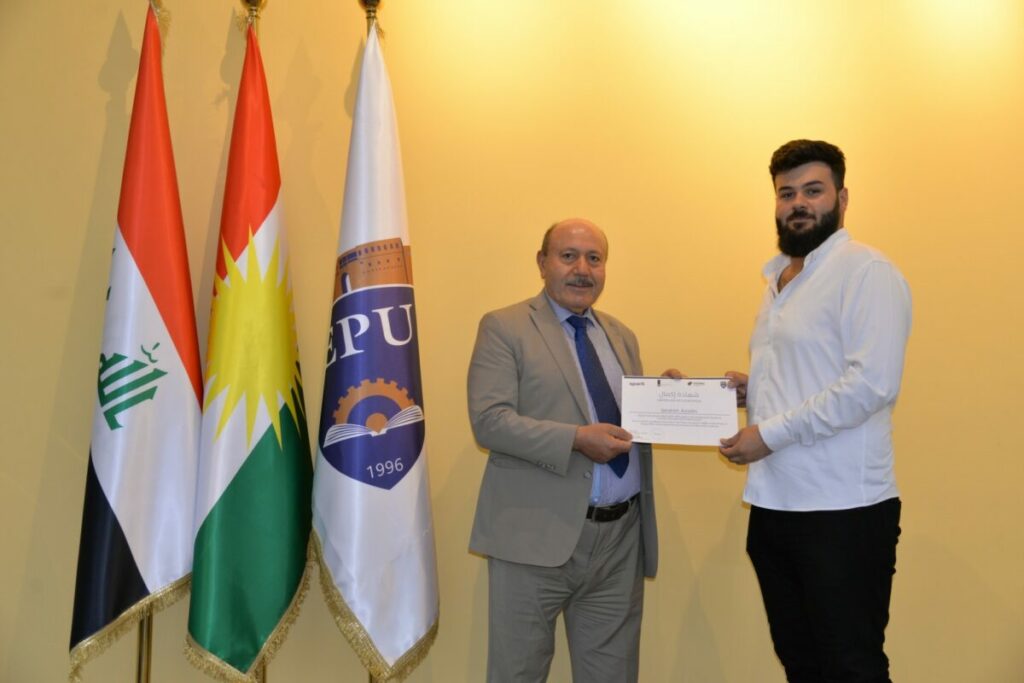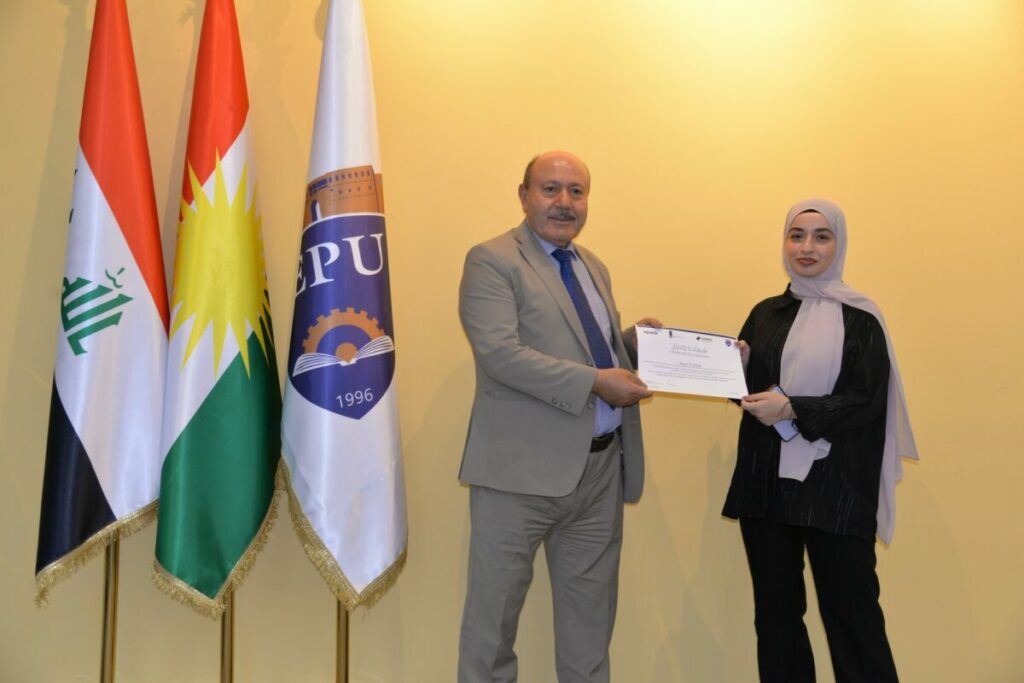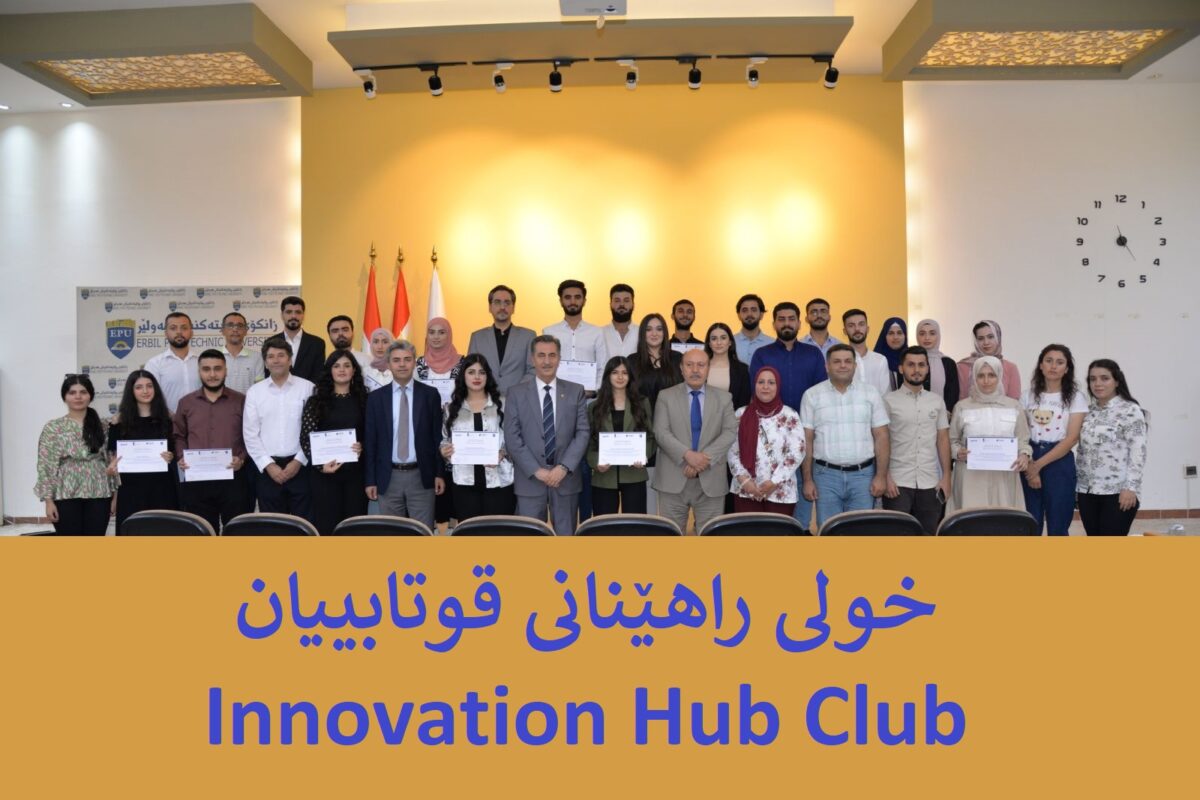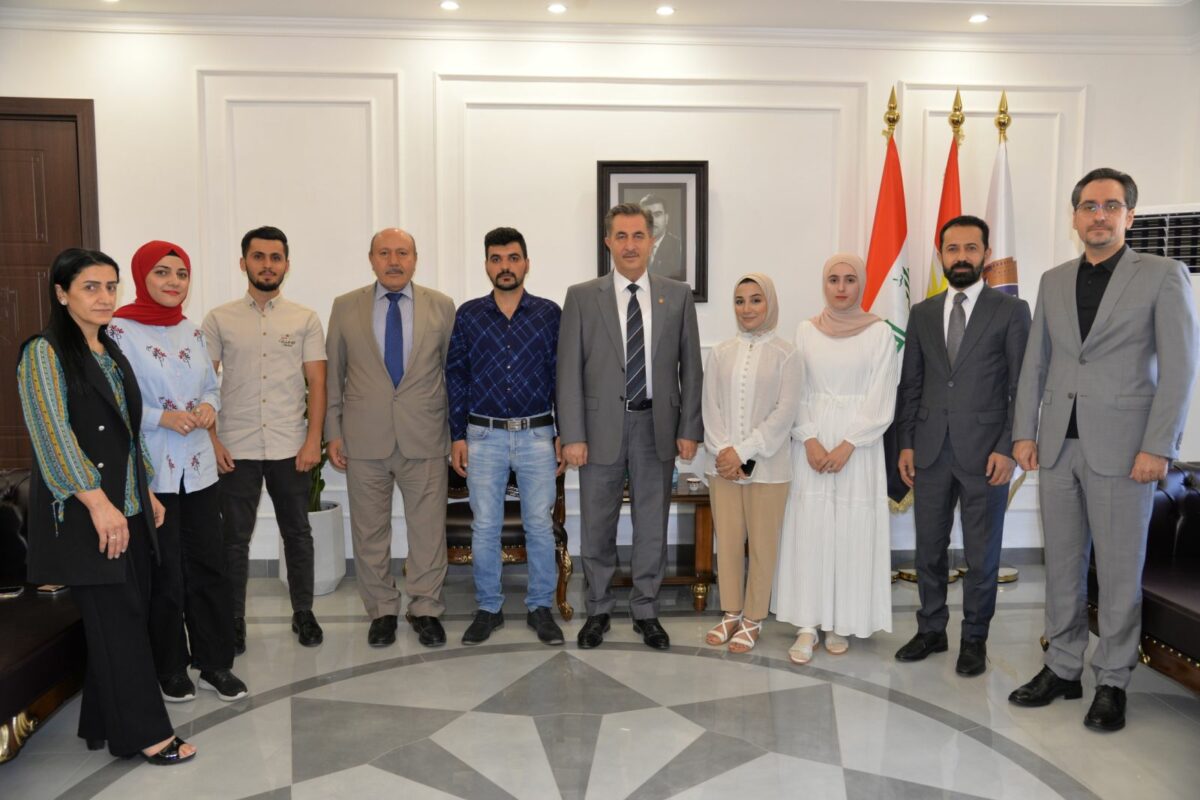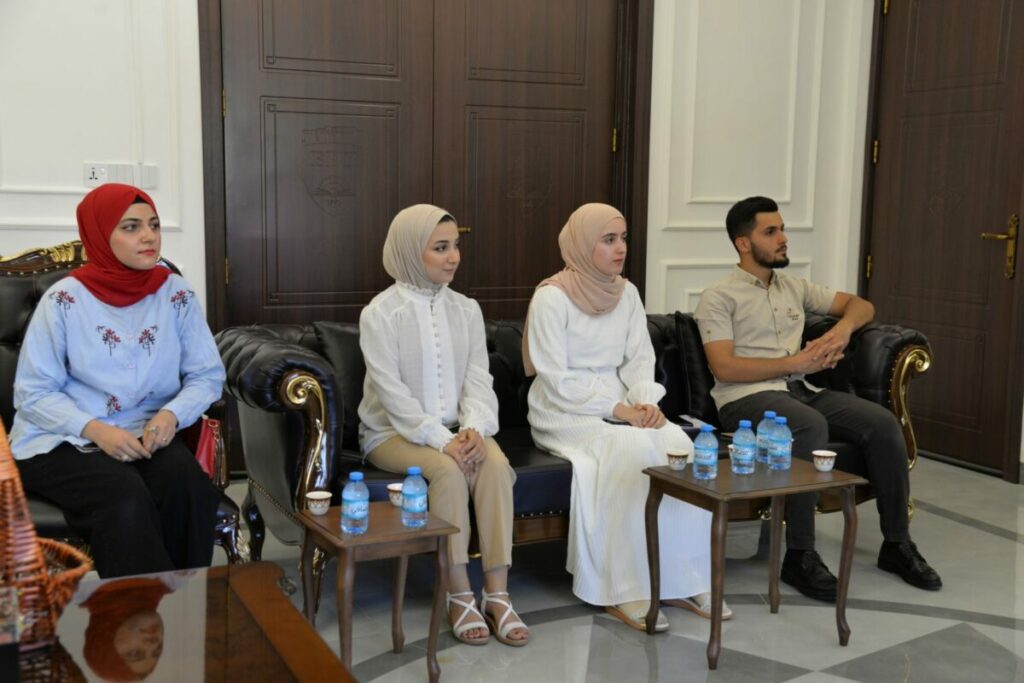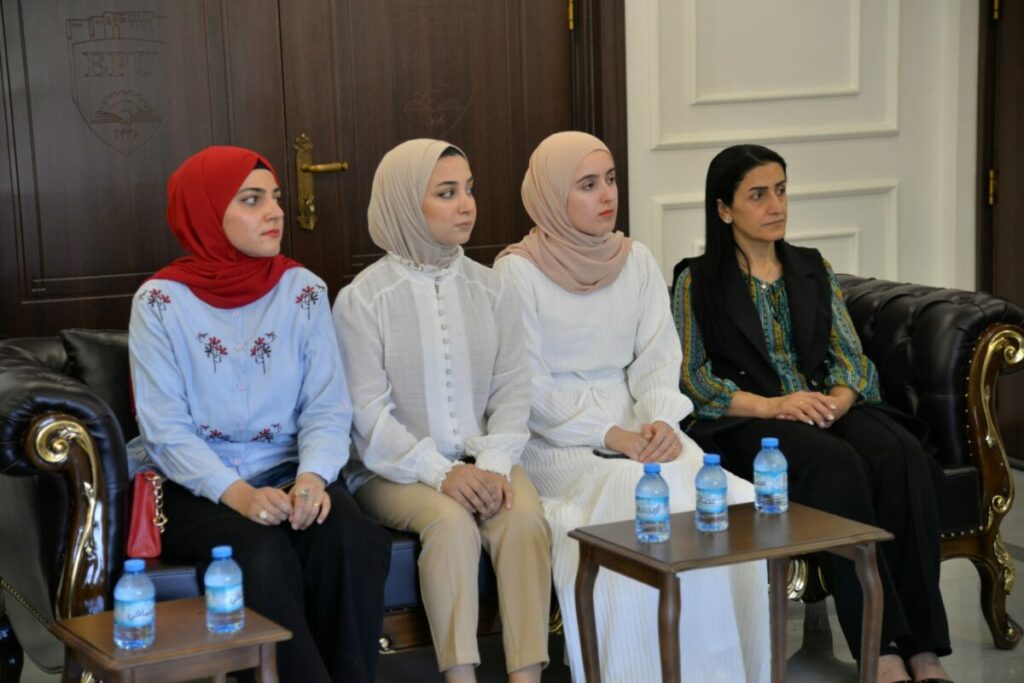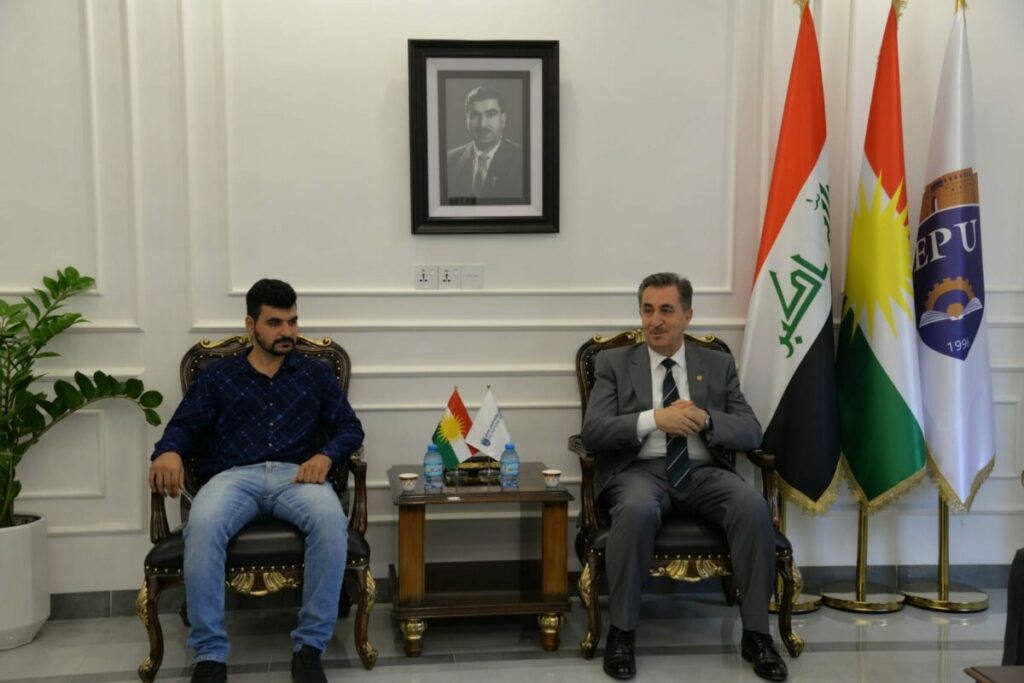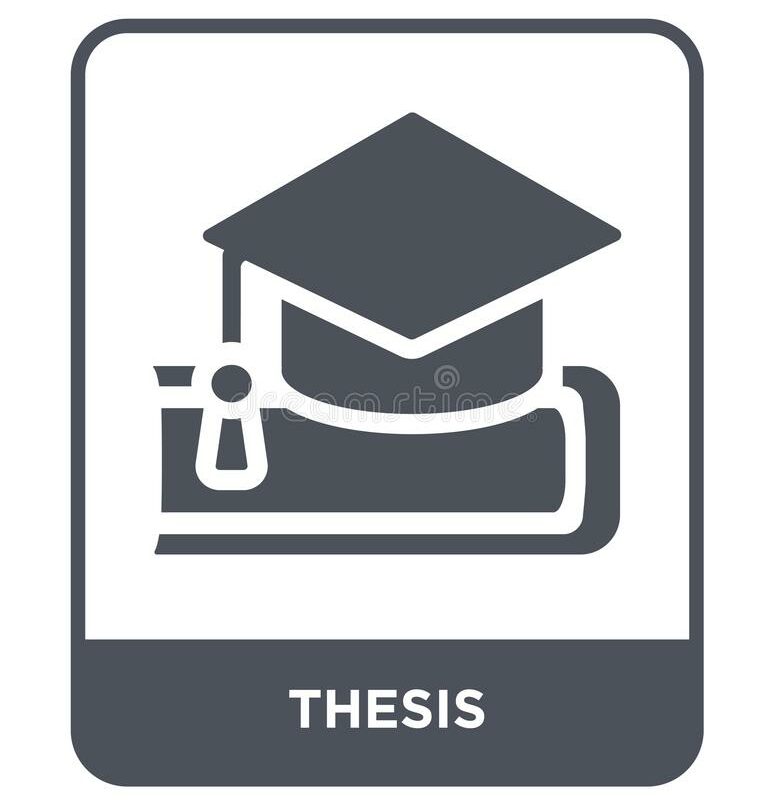On Thursday, the 20th of July, 2023, in the presence of Prof. Dr. Edrees Muhamad Tahir Harki the students performed a workshop regarding the fulfillment of their training course.
At the workshop where the Vice Rector for Scientific Affairs, the Director of International Relations Office, and the Director of the Career Development Center were present the students presented a seminar in which they discussed their proposals to solve the companies’ problems.
The workshop was a part of a project called (Innovation Hub Club) that was conducted for three months by the assistance of Dutch SPARK Organization and supervised by DOINK (Graphic Design Firm), in which seven students from the Erbil Polytechnic University successfully completed the training course and learned how to manage a student club.
The project was supervised by the Career Development Center Directorate (CDC) of the University Presidency. After the completion of the course the students opened a club called Students Club on 15, 16 and 17 June, 2023 and the first activity of the club (Innovation Hub Club) started. The main trainers of this workshop were seven students of the Erbil Polytechnic University.
Today, the workshop ended and certificates were distributed on the students and a Student Club were awarded to them by the Dutch SPARK Organization, DOINK Firm, and the Career Development Center. In this training course 22 students participated.
This workshop was an opportunity for students to develop skills and introduce them to the labor market and how to solve the problems faced by companies, and strengthen communication skills and self-confidence.
It is worth mentioning that this workshop was a challenge between students of the Erbil Polytechnic University, the Mosul University and Northern Technical University.
